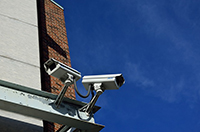 As a small business owner, you need help to run your business. You can hire someone, but you have to be careful that he or she is classified properly. Otherwise, you could face hefty fines from the IRS. Learn the difference between employees and independent contractors before your next hire.
As a small business owner, you need help to run your business. You can hire someone, but you have to be careful that he or she is classified properly. Otherwise, you could face hefty fines from the IRS. Learn the difference between employees and independent contractors before your next hire.
What is an Employee?
Employees are workers you hire for a specific job. They are an integral part of your business and receive most of their income from you.
You determine the employees’ work hours and schedule. If they do not show up for work at their assigned times, they could be fired.
When paying employees, you must take out taxes and any insurance coverages. They receive a regular paycheck from you.
Employees use your tools, equipment and materials. In most cases, they are not required to provide any of these items for their job.
What is an Independent Contractor?
Independent contractors are self-employed. They use their skills to help business owners like you meet temporary needs. Examples include plumbers, freelance writers and office cleaners.
When hiring independent contractors, remember that they work for whomever they want and do not rely solely on you for their income. They also bring their own tools and pay their own taxes and insurance costs.
You do still need to write, review and sign a contract that verifies the pay rate and project completion date. However, you do not micromanage the work. Independent contractors cannot be fired for not showing up one day as long as they are completing the work according to the contract.
Use this checklist to determine if the workers you hire are employees or independent contractors:
- Do you or the workers provide the tools, supplies, equipment and materials?
- Do you or the workers set their schedule?
- Is the work permanent or temporary?
- Are the workers micromanaged or allowed to do the project on the timeline they prefer?
- Do the workers rely solely on your for their income or have multiple jobs going at once?
- Do you pay taxes and insurance for the workers or are they responsible for those financial obligations?
- Are the workers an integral part of your business or needed only occasionally?
Employees and independent contractors are different. Protect yourself and your workers when you understand the differences before you hire anyone. For more information, talk to your financial advisor or attorney. Make sure you have adequate insurance for your business, too, as you grow your team.














